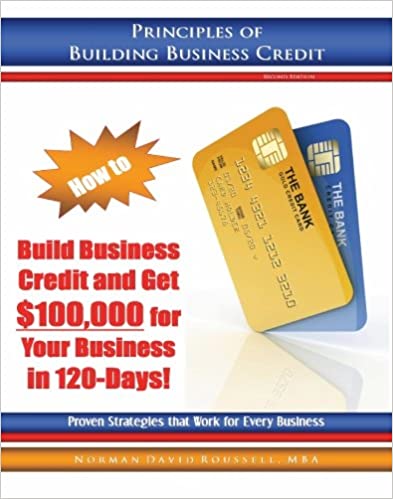How To Buy A New Car From A Dealership
Want to buy a new car from a dealership? Sure, you know you’d pay less for a used car, but you’ve probably decided not to risk possible problems with an old car and to invest more money. So you are willing to pay relatively a lot of money for a new car, so it is certainly important for you to get the best and most reliable car.
How To Buy A New Car From A Dealership Photo

How To Buy A New Car From A Dealership Photo Source: wikipedia.org
How To Buy A New Car From A Dealership Tutorian and Other Information
Method 1
Take control
1
You need to know what you want and how to get it. If you do not know exactly what you are looking for, car dealers will do what they want with you and offer you cars that are not suitable for you. Don’t let such a thing happen and be prepared.
Get car manufacturer catalogs and magazines for motorists and choose the cars that will interest you the most.
2
Talk to people. There is nothing better than finding a person who understands cars and talking to him. It is not good to always follow the reports of car manufacturers who are trying to sell their products to everyone. Stick to people who do something about cars and can advise you.
3
Set your priorities. What is most important to you in a new car? Do you have a family and need a big enough car? Are you looking for a large sedan or a small van with perfect safety equipment? Do you work as a salesman and want to make a good impression? Do you often plan to carry heavy loads? Try to choose a car that will suit your lifestyle. If you have a car that does not meet your needs, you will not be satisfied.
Method 2
Think about the price
1
Narrow your selection by setting a budget. Have you selected the first five or six cars that interest you? Now you need to set a budget to make a decision. Because finances are easy to deal with these days, it’s tempting to exceed your budget and expect to be able to afford to repay more than you actually can. So it is important to set a reasonable budget and choose a car according to whether you can afford it.
How much will you be able to pay on the spot? The more money you have in cash, the less you will have to repay. You will probably also be able to have lower monthly payments.
Decide what to do with your current car (if you have any). When you sell your car yourself, you get more money for it than if you sold it to a used car dealership. On the other hand, it may take you longer and it will cost you more time with effort.
Be prepared to pay about 10% of the entire amount for fees, taxes, etc. If, for example, you set a budget of $50,000, be prepared for the fees and other payments associated with the purchase of a car to cost you approximately $1,500.
2
Determine the billing amount for a car. The invoicing amount is the price that the buyer will pay you for the car. This amount will probably be one of the most important values, but it still does not include everything. The invoicing amount does not include advertising and sales prices that dealers pay for the sale of the car. Dealers usually value new cars at a price 10% higher than the invoicing price. It is possible that if you ask for a car worth the billing price, it will cost the dealer more money, so you should not abuse it.
3
Determine other important prices. Find out the price of the car, which is stated by the manufacturer. The manufacturer usually determines the price of the car and dealers have the opportunity to increase it so that they still earn on sales.
A fair purchase price is the average price that people pay for a given car under the same market conditions. It’s a good idea to find out if you want to pay unnecessarily much for your car.
Prepare for market fluctuations. Like all other markets, the car market has its ups and downs. The popular car, which is in short supply, is likely to sell at a much higher price than the manufacturer’s price.
4
Find out the cost of insurance for cars that interest you. Insurance is an absolute necessity and the truth is that for some cars insurance costs a lot of money. Ask your car dealer before choosing a car to avoid accidentally exceeding your budget because you will have to pay a lot of extra money for insurance.
5
Decide how to get money if you need it. If you do not have enough money to pay for the car in cash, you will have to take out a loan. You will pay a certain amount on the spot and you will repay the rest in monthly installments, which will be affected by the interest that the car dealer will set for you. The higher the installments you have, the less you will overpay in the end.
Sometimes a car dealer will offer you a good financing offer, such as an interest-free loan, which means that in the end you will not repay anything if it is repaid properly. However, you may not be eligible for this offer. These offers are usually linked to the amount of the first installment and the payment morale of the client.
It is important to know that loans from car dealers are not always the most advantageous. It may be better to ask about financing options at your bank. If you are not an extremely creditworthy client, tell the seller that you will pay for the car in cash (you do not have to pay in cash, but you can use the money from a bank loan).
Method 3
Buying a car
1
Choose the three models you like the most. If you’ve found a single car that you like, that’s fine, but you won’t be as flexible in finding a deal. Browse the manufacturers’ websites to find prices. Print them out and try to see if the manufacturer offers any interesting offers, such as discounts for some clients, etc.
2
Take a ride in the cars you have chosen. Request a test drive on the models you choose. Until now, your search for a car has basically only been theoretical and methodical. Now it’s time to have some fun and try driving, which will eventually become your own. Here are some tips on how to get the most out of a test drive and choose the best car with it:
Notice how you feel in the car while driving and how you feel about it. If you experience any problems during the test drive, they could cause great trouble in the future, so trust your instincts.
Try not to express any emotions. You will probably be excited and full of adrenaline, but you should not show it to the seller.
3
Call several local car dealerships and ask for a price. When you call a car showroom, have a sales manager call you. Don’t talk to regular staff, who usually can’t give you any discounts. Say this:
“I’m looking for / year / model / manufacturer with / your preferences /. Do you have this car in your offer? If so, how much do you sell it for? ” Then say that you have already driven in the car and emphasize that you want to find out the price over the phone.
Start bidding on the billing price minus the discount, plus 1%. Multiply your billing price by x 1.01.
If possible, request a quote by email, including all fees, taxes, etc., so you can show the quote to other sellers. Please confirm this price before visiting the seller in person.
4
Call other managers and ask them if they will offer you a better price. When you call five or seven car dealerships and get offers, you will probably save a few thousand dollars than the lowest price you can get at showroom. Call the first car seller again and ask him if he will offer you a better offer than the other car sellers. Don’t be invited directly to the car showroom. Do this with as many scar ellers as possible until you’re at the lowest price possible, or at a price that’s almost equal to the billing price.
After confirming the price over the phone, ask the manager to print it out and send it to you along with other fees, insurance and taxes. If you do not receive a message, you can assume that this dealer will not sell you the car at the agreed price.
5
Go to the seller with whom you negotiated the cheapest price and show him the document he sent you. In most cases, the dealer will sell you a car at this agreed price because he will want to avoid legal delays. If you don’t want to sell your car, just go somewhere else. This will indicate that you do not intend to negotiate. Most dealers would rather sell you a car than let you go.
Method 4
Avoid common mistakes
1
Never sign a contract without reading it well. If you do not understand something in the contract, do not sign it. Ask the seller to explain everything to you. If the seller leads you by the nose, he could face fines or even a lawsuit. Carefully read the entire contract and the offer you received from the seller and make sure that there is no catch in the contract.
Some dealers sometimes even increase the agreed interest or add a warranty to your car that you did not agree on. These practices are illegal, try to avoid them. It is easy to change the monthly payment by $500, for example, because not everyone will find out when reading the contract. But if you calculate it, you would pay $12,000 more in 2 years. Watch out.
2
Don’t buy useless things. Like fast food vendors trying to offer you extra drinks, car dealers are trying to make more money. Ask yourself what you really need and what is unnecessary and more. Do you really need to protect your car from rust, or are you too tired to argue with the dealer?
3
Don’t be amazed by the four square leaves. If you see your dealer trading four square sheets, tell him to leave if he doesn’t put it off. Four square worksheets are pieces of paper that sellers run out of in desperate attempts to deceive the buyer. Basically, how it works:
The sheet is divided into four quadrants: Trade-in value; purchase price; deposit; and monthly payments. The seller will enter what interests you most (perhaps reducing your monthly payment) and reducing the payment to one square while increasing the payment to another. The hand looks logical, but it’s more like a three-card trick. The seller mainly uses this piece of paper to confuse you.
4
Don’t just focus on the monthly payment. Some dealers will only ask you how much you intend to pay for your car per month. If you decide on the installment before you find out the total value of the car, you will always pay more than you want. Think about it. When the dealer first determines your installment, he can then adjust the final price of the car according to how many months he determines. This should not be the case. Always agree on the final amount first and then start solving the installments.
5
Don’t let the car dealer make you feel bad. Car dealers are a special kind of dealers. They can manipulate your emotions to close a deal that will benefit them. It is good to be careful not to be fooled by such a seller.
You should not allow retailers to tell you things like, “Surely you would not be negotiating the price of a liter of milk at the supermarket!” They are trying to make you feel guilty and ensure that you agree with their price. The answer is that you don’t have to worry about paying more in the supermarket than the amount of milk on the shelf. Tell him no one has ever had to borrow a liter of milk.
How To Buy A New Car From A Dealership Tips
Behave. If you treat the sellers decently, they will be willing to negotiate with you.
Don’t forget the car show websites. You can get great discounts over the internet.
Another way to make sure the dealer offers you the price you want is to get a loan elsewhere and come to the car dealership with a check written for the amount you intend to pay for the car. Most sellers will not reject such an offer (if your price is reasonable – about 3% higher than the billing price).
It is important to buy a car at the right time. At the end of the year, dealers are trying to get rid of their cars. In December, you will often not even have to negotiate prices.
If you want a car that is hard to find or produced in limited numbers, you probably won’t be able to negotiate the price too much.
Take a friend with you to the car show who doesn’t like your chosen car to keep you from paying too much. If you have a partner, take him with you and give him the same task. Always have a good reason to leave before the seller wants to. You don’t have to make a decision the first time you visit a car show. Don’t let the seller force you to make a decision as soon as possible. He will try to do this to drive you into a corner and force you to pay more.
It is best to go shopping at a time when there are not many people in the car show, for example in the evening.
Find out about the car you like, compare prices on the internet and find out what the model includes. Don’t be afraid to ask sellers questions and find out more.
It is possible to get a car for the invoicing price, because dealers will save money on various discounts, but cars that are in high demand will never be bought for the invoicing price.
How To Buy A New Car From A Dealership Warnings
If the seller tells you to report higher earnings to get a better interest rate, decline. This is a scam for which you would be responsible.
If you buy a car in installments, the seller may try to set a higher interest rate for you than the one set by the bank with which you took the loan. Always ask about the interest rate set by your bank. You should not pay much more than this rate. Instead of a higher interest rate, you should negotiate the same fee rate, which will pay you more in the long run.

